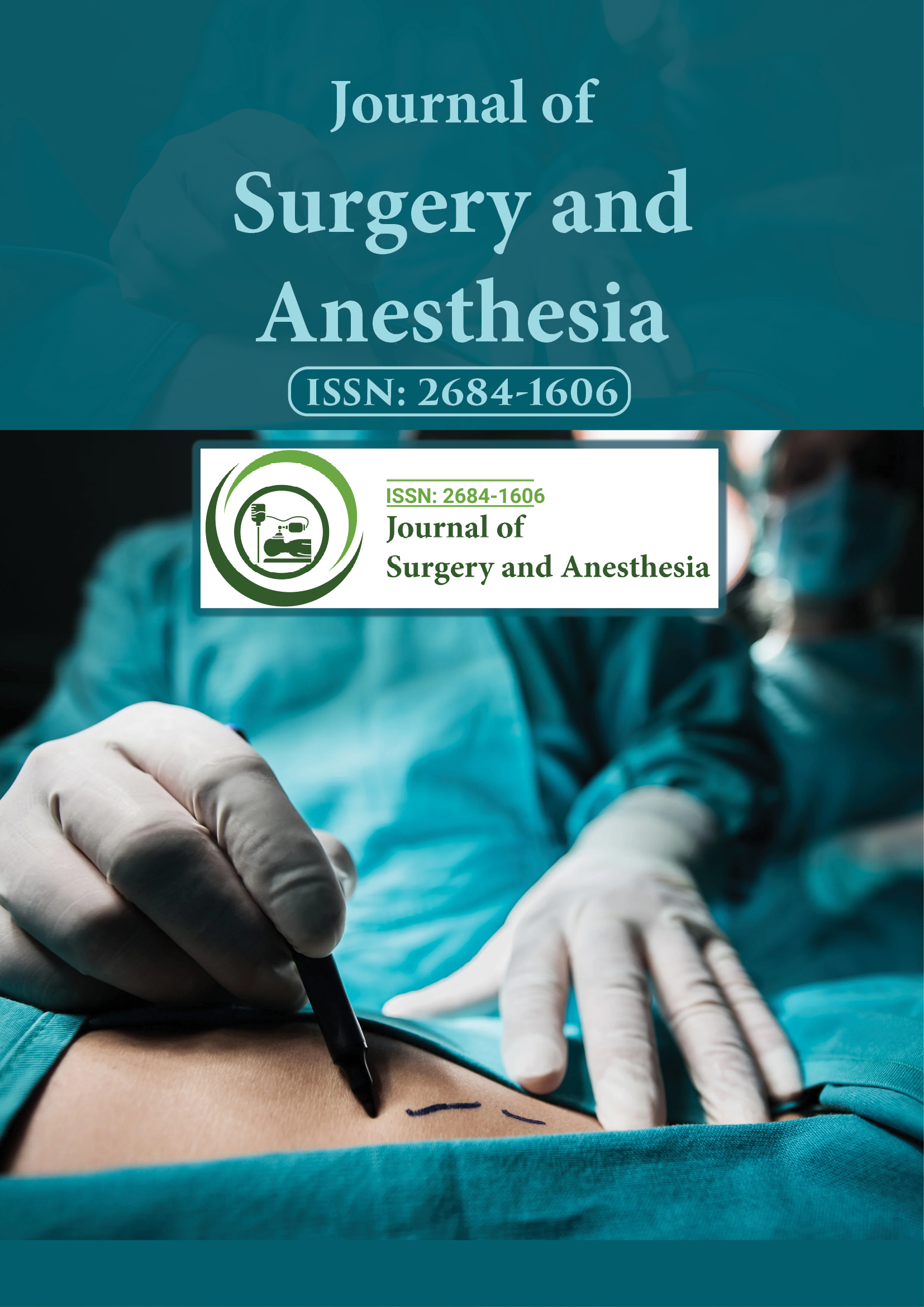Indexed In
- Google Scholar
Useful Links
Share This Page
Journal Flyer

Open Access Journals
- Agri and Aquaculture
- Biochemistry
- Bioinformatics & Systems Biology
- Business & Management
- Chemistry
- Clinical Sciences
- Engineering
- Food & Nutrition
- General Science
- Genetics & Molecular Biology
- Immunology & Microbiology
- Medical Sciences
- Neuroscience & Psychology
- Nursing & Health Care
- Pharmaceutical Sciences
Perspective - (2024) Volume 8, Issue 3
Use of Indocyanine Green Fluorescence-Guided Surgery in Pediatric Patients
Luoto Ham*Received: 26-Aug-2024, Manuscript No. JSA-24-27051; Editor assigned: 28-Aug-2024, Pre QC No. JSA-24-27051 (PQ); Reviewed: 11-Sep-2024, QC No. JSA-24-27051; Revised: 19-Sep-2024, Manuscript No. JSA-24-27051 (R); Published: 26-Sep-2024, DOI: 10.35248/2684-1606.24. 8.259
Description
Indocyanine Green (ICG) fluorescence-guided surgery has emerged as an innovative technique in the field of pediatric surgery, providing surgeons with real-time, intraoperative visualization of tissues and structures. While its use was initially limited to adult surgeries, the technique has gained traction in pediatric procedures due to its ability to enhance the precision of surgical interventions, reduce complications and improve overall outcomes. By integrating ICG into pediatric surgeries, medical teams can navigate complex anatomical landscapes more effectively, particularly in areas where standard imaging techniques may not offer the clarity or detail required.
Indocyanine Green is a water-soluble dye that has been widely used in medical diagnostics since the 1950. When injected intravenously, it binds to plasma proteins and is subsequently excreted by the liver, making it an ideal agent for imaging blood vessels, lymphatic structures and liver function. The flourescence effect is triggered when ICG is exposed to near-infrared light, emitting a green glow that allows for real-time visualization of the structures it permeates.
In fluorescence-guided surgery, a near-infrared camera system is used to visualize the fluorescent signal emitted by ICG. This technique has become a powerful tool for identifying vital structures, assessing tissue perfusion and guiding surgeons in performing delicate, complex operations. ICG fluorescence has proven to be particularly valuable in pediatric surgery, where the small size of anatomical structures often presents significant challenges. The use of ICG fluorescence imaging has extended into a variety of pediatric surgical specialties, including oncology, urology, vascular surgery and organ transplantation. The follow- -ing are some of the key areas where ICG fluorescence is making a significant impact.
One of the earliest uses of ICG fluorescence in pediatric surgery has been in liver resections and transplantations. In liver surgeries, ICG helps in mapping the vascular structures and delineating tumors. This is particularly important in pediatric patients with liver tumors, where distinguishing healthy tissue from diseased tissue can be difficult. Additionally, ICG is used in liver transplantation to assess graft perfusion, ensuring that the liver receives adequate blood supply immediately after transplant, which can reduce the likelihood of complications such as graft failure. Lymphatic malformations are common in pediatric patients and can be challenging to treat surgically due to the diffuse nature of lymphatic vessels. ICG fluorescence is increasingly being used to map lymphatic vessels intraoperatively, helping surgeons identify and precisely remove abnormal lymphatic tissue while preserving healthy lymphatic drainage pathways. This technique has been instrumental in improving the outcomes of surgeries for conditions such as lymphedema or lymphatic malformations in the neck and chest.
In pediatric oncology, achieving clear surgical margins is critical to reducing the risk of cancer recurrence. ICG fluorescence has proven useful in tumor resections, as it allows surgeons to differentiate between tumor and healthy tissue. This is particularly advantageous in conditions such as neuroblastoma, Wilms tumor and soft tissue sarcomas, where precise excision is essential. By enhancing the surgeon’s ability to see residual tumor cells, ICG helps reduce the need for repeat surgeries and improves survival outcomes for pediatric cancer patients.
Vascular anomalies, such as Arteriovenous Malformations (AVMs) or aneurysms, often require intricate surgical interventions. ICG fluorescence helps in visualizing blood flow through these abnormal vessels, enabling surgeons to locate the malformation and carefully excise it while minimizing the risk of hemorrhage or injury to surrounding tissues. In particular, ICG has been used to assess the patency of anastomoses, ensuring that newly connected blood vessels are functioning as intended.
ICG fluorescence has also found a role in pediatric urology, where it aids in procedures such as ureteral reconstruction, pyeloplasty and kidney transplants. The dye helps visualize the blood supply to the kidneys and urinary tract, allowing for precise anastomosis and reducing the risk of ischemic injury. In cases of renal tumors, ICG can help differentiate between normal and cancerous tissues, making tumor resections more accurate. ICG fluorescence offers several advantages that are particularly beneficial in pediatric surgery. Pediatric anatomy can be challenging due to the smaller size of organs and tissues compared to adults. ICG fluorescence provides enhanced visualization of structures that may be difficult to identify with the naked eye, such as small blood vessels or lymphatic channels. This allows surgeons to navigate complex anatomical regions with greater confidence.
The real-time imaging capability of ICG fluorescence is a significant asset in surgery. Surgeons can immediately assess tissue perfusion, identify critical structures and adjust their surgical approach on the fly. This is especially useful in cases where time-sensitive decisions need to be made, such as determining the viability of a transplanted organ or ensuring adequate blood flow following vascular reconstruction. ICG fluorescence can be integrated into minimally invasive surgical techniques, such as laparoscopy or robotic surgery, which are often preferred in pediatric cases to minimize trauma and reduce recovery times. The use of ICG in these contexts allows surgeons to perform precise dissections with minimal tissue damage.
Citation: Ham L (2024). Use of Indocyanine Green Fluorescence-Guided Surgery in Pediatric Patients. J Surg Anesth. 8:259.
Copyright: © 2024 Ham L. This is an open access article distributed under the terms of the Creative Commons Attribution License, which permits unrestricted use, distribution, and reproduction in any medium, provided the original author and source are credited.
